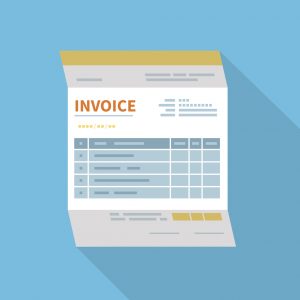Self-employment is both challenging and rewarding, and for career practitioners who, like me, make the giant leap to start our own private practice, setting fees for our services can be a struggle. We have this fear of charging too low because we are just starting out or charging too high because we are comparing our fees with those of our competitors. Most times, though, we encounter the imposter syndrome monster who tells us we are not qualified enough, resulting in undervaluing ourselves and charging too little.
Another challenge some of us face is what I term the “eager to please disease,” where we allow clients to control or dictate what fees we should charge, and how we should run our business. Some of us rush to offer a discount when we face resistance, or when potential clients suggest we “are too expensive.”
One of my “eager to please” experiences occurred very early in my business, when it was a side hustle. I had received some publicity in one of our community newspapers. The following week, a client who had read my story engaged me for a full resume package. She came from across town empty-handed. She did not even bring an old resume, so we had to start from scratch.
Although it is said we should not judge a book by its cover, the moment I saw this lady I was judging her cover. I had this gut feeling that something was just not right, but I couldn’t put a finger on it. During our conversation she kept saying she needed the package fairly quickly as a few hospitals from the US were soon to visit Toronto to hire RNs and RPNs (Registered Practical Nurse), and she wanted to have her documents ready.
When her package was completed, I sent it by courier with the invoice – a measly sum of $137.50. Days went by and I did not hear from her, not even an acknowledgement that she had received the package. After I had left several messages, she finally returned my call, but did so when she knew I would be away. That message shook me up: “What did you do? I was the one who answered all your questions, and went as far as sending you the RPN manual for you to get more information. You didn’t do much,” she said. I almost cried in disbelief. (She later offered to pay in two installments, but I told her it was fine, and wished her luck.)
Lesson learned

As a newbie to business, my eagerness to please caused me to go above and beyond with the client, but I learned a valuable lesson, and one that has served me for years. The experience highlighted the need for me to develop policies and guidelines and set clear expectations around everything that relates to running a business, including setting my fees.
At the time, I operated on an honour system. I would complete the work then send the invoice afterwards. After that incident with the client, I was forced to create a payment policy.
My first policy was to request 50% at the start of the project and the remaining balance prior to release of the final product. That worked for years, but as my business – and my confidence – grew, and as I engaged in continuous professional development, I changed my modus operandi and instituted a new payment policy requiring full payment up front.
What to think about when setting fees
If you are a career practitioner contemplating starting your own private practice and concerned about what fees you should charge, it’s important to know from the start that a one-size-fits-all fee-setting formula does not exist. We have all learned by a process of trial and error, by using different variables to set our fees and by frequently modifying it as we go along.
Here are some questions to ask yourself when considering setting your fees:
- What dollar value would I place on the client’s increased earning potential after they have worked with me to advance to a better, higher-paying job?
- What value would I put on the career changes that have occurred as a result of the client working with me?
- How much do I want to earn on an annual basis?
- What are other industry professionals charging for similar services? (Don’t be too constrained by this one.)
- What value am I offering my clients, and what feels comfortable for me to charge?
- What price point will my potential clients pay? (A quick survey of current and potential clients would help.)
“We have all learned by a process of trial and error, by using different variables to set our fees and by frequently modifying it as we go along.”
A good rule of thumb in setting your fees is to think more about the value you offer and not so much about the price. In fact, it’s better to choose a prospect who values your expertise and expects to pay a reasonable (or premium) fee for your services, than haggle with those who want to nickel and dime you.
Michael Hyatt, former Chairman and CEO of Thomas Nelson Publishers, is a leadership expert whose blog posts I read quite frequently. One such post, titled “Why You Should Do It for the Money (And Stop Feeling Guilty About It)”, is about charging for our services without feeling guilty. My take-away from the post is that:
- Charging for our services is a necessity if we are going to support our families.
- When we start charging for our services, we elevate ourselves from being an amateur to being a pro.
- When we charge, we respect ourselves and our work more, and we create value in our own mind.
I wholeheartedly believe that when we create value in our mind, it’s a no-brainer to charge what we are worth.
Want the best of CareerWise delivered to your inbox each week? Subscribe to our popular CareerWise Weekly newsletter to receive top news and views in career development every Tuesday.





